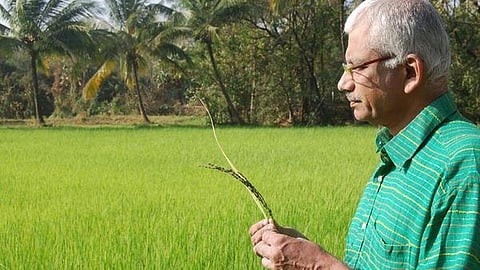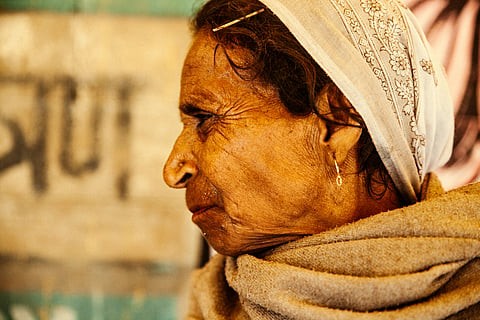



Television remains a powerful tool for inclusive education in India, offering curriculum-based learning through Doordarshan, PM e-Vidya channels, and SWAYAM Prabha. It proved indispensable during COVID-19 and continues to bridge digital divides by providing free, multilingual content accessible to millions of students nationwide.

Copyright infringement not intended
Picture Courtesy: PIB
World Television Day, observed every year on 21 November, commemorates the United Nations’ 1996 resolution recognising television as a critical medium for information, education, public opinion, and global understanding.
|
Must Read: NEW GUIDELINES FOR TV CHANNELS | TRP POLICY | |
Experimental beginnings (1959–1965)
Television started on 15 September 1959 as an educational experiment by All India Radio in partnership with UNESCO.
Expansion and Institutionalisation (1965–1982)
Regular broadcasts began in 1965, transforming the medium into a national public broadcasting service. Key developments:
By the early 1980s, the institutional structure of Doordarshan was firmly in place, supported by an expanding regional network.
Colour Broadcasting and National Reach (1982–1990)
The advent of colour TV during the 1982 Asian Games accelerated the medium’s growth.
Liberalisation and Satellite Television Era (1991–2011)
Economic reforms brought private players such as Star TV (1991), Zee TV (1992), and Sony (1995), reshaping the entertainment and news ecosystem.
Doordarshan simultaneously expanded with channels like DD National, DD Metro, DD News, and DD India. A major milestone was:
The Prasar Bharati Act (1990) came into full effect in 1997, granting autonomy to India’s public service broadcasters.
Prashar Bharati ActThe Prasar Bharati (Broadcasting Corporation of India) Act, 1990 is the law that established Prasar Bharati, India’s autonomous public service broadcasting corporation. Although enacted in 1990, the Act came into full force on 23 November 1997, when Doordarshan (DD) and All India Radio (AIR) were formally brought under Prasar Bharati. Key Features of the Prasar Bharati Act: ·The Act provides for the creation of the Prasar Bharati Corporation, a statutory autonomous body responsible for governing Doordarshan and All India Radio, functioning in the public interest while remaining independent of direct government control. ·The mandate of Prasar Bharati requires it to uphold the unity and integrity of the nation, safeguard citizens’ right to be informed, and provide programmes that reflect India’s cultural, linguistic, and regional diversity. It is obligated to promote education, literacy, agriculture, rural development, and family welfare ·The Act establishes a clear governance structure through the Prasar Bharati Board, consisting of a Chairperson, an Executive Member, a Member (Finance), a Member (Personnel), six part-time Members, the Director-General of Doordarshan, the Director-General of All India Radio, two representatives of the employees, and a representative of the Ministry of Information and Broadcasting without voting rights. To ensure autonomy, board members are appointed by a Selection Committee headed by the Vice-President of India. ·The Act stresses editorial independence, mandating non-partisan, objective, and fair dissemination of news and explicitly discouraging political influence in programming decisions. |
Digital Transition and Modern Television (2012–Present)

Picture Courtesy: PIB
Educational Broadcasting: Television has remained one of India’s most enduring tools for mass education, especially in regions where digital infrastructure remains weak. According to the National Sample Survey (2022), more than 65% of Indian households own a television, compared to only 37% with internet-enabled devices in rural areas. This makes broadcasting a critical medium for educational outreach. Doordarshan’s long-standing programmes like Gyan Darshan, Krishi Darshan, and Tele School have historically supported school, vocational, and agricultural learning.
Educational broadcasting during COVID
PM e-Vidya: Launched under the Atmanirbhar Bharat Abhiyan (2020), PM e-Vidya created India’s largest broadcast-based education ecosystem, bridging online and offline modes.
Key Features
SWAYAM Prabha: SWAYAM Prabha is a network of high-quality educational channels using GSAT satellites to deliver uninterrupted learning across India.

Picture Courtesy: PIB
Digital Terrestrial Television (DTT): India is shifting from analogue to DVB-T2-based digital terrestrial broadcasting. Benefits include:
Almost all analogue transmitters have been phased out except 50 strategic sites.
Expansion of DD Free dish: A major driver of digital inclusion.
Regulatory Developments: TRAI’s recommendations under the Telecommunications Act, 2023 aim to:
High penetration and wide accessibility: Television remains India’s most widely accessed communication medium. According to National Sample Survey 2022, over 65% of Indian households own a television, compared to only 37% with internet-enabled devices in rural areas.
Bridges the digital divide across regions and classes: Digital education faces constraints like device shortage, poor connectivity, and high data costs. TV bypasses these barriers.
CASE STUDYIn Aspirational Districts such as Dantewada (Chhattisgarh) and Mewat (Haryana), learning continuity during COVID-19 was sustained primarily through Doordarshan regional channels |
Highly cost-effective and scalable: Television is the most affordable mass medium for educational delivery.
A single SWAYAM Prabha channel can telecast 48 lecture hours per day (multiple repeats) with negligible cost per learner.
Television continues to play a transformative role in India’s educational landscape by ensuring continuity of learning, promoting digital inclusion, and supporting national initiatives like PM e-Vidya and SWAYAM Prabha. Even in an internet-driven era, television remains the only medium capable of delivering equitable, curriculum-aligned learning at scale to millions of households across rural and underserved communities.
Source: PIB
Practice QuestionQ. Discuss the role of television in promoting inclusive and equitable education in India. Evaluate its relevance in the post-pandemic digital era. (250 words) |
Because it reaches millions who lack smartphones, stable internet, or digital literacy.
SWAYAM is an online MOOC platform; SWAYAM Prabha is a set of satellite TV channels.
No. It integrates DTH channels, e-content, teacher training modules, and special needs resources.





© 2025 iasgyan. All right reserved